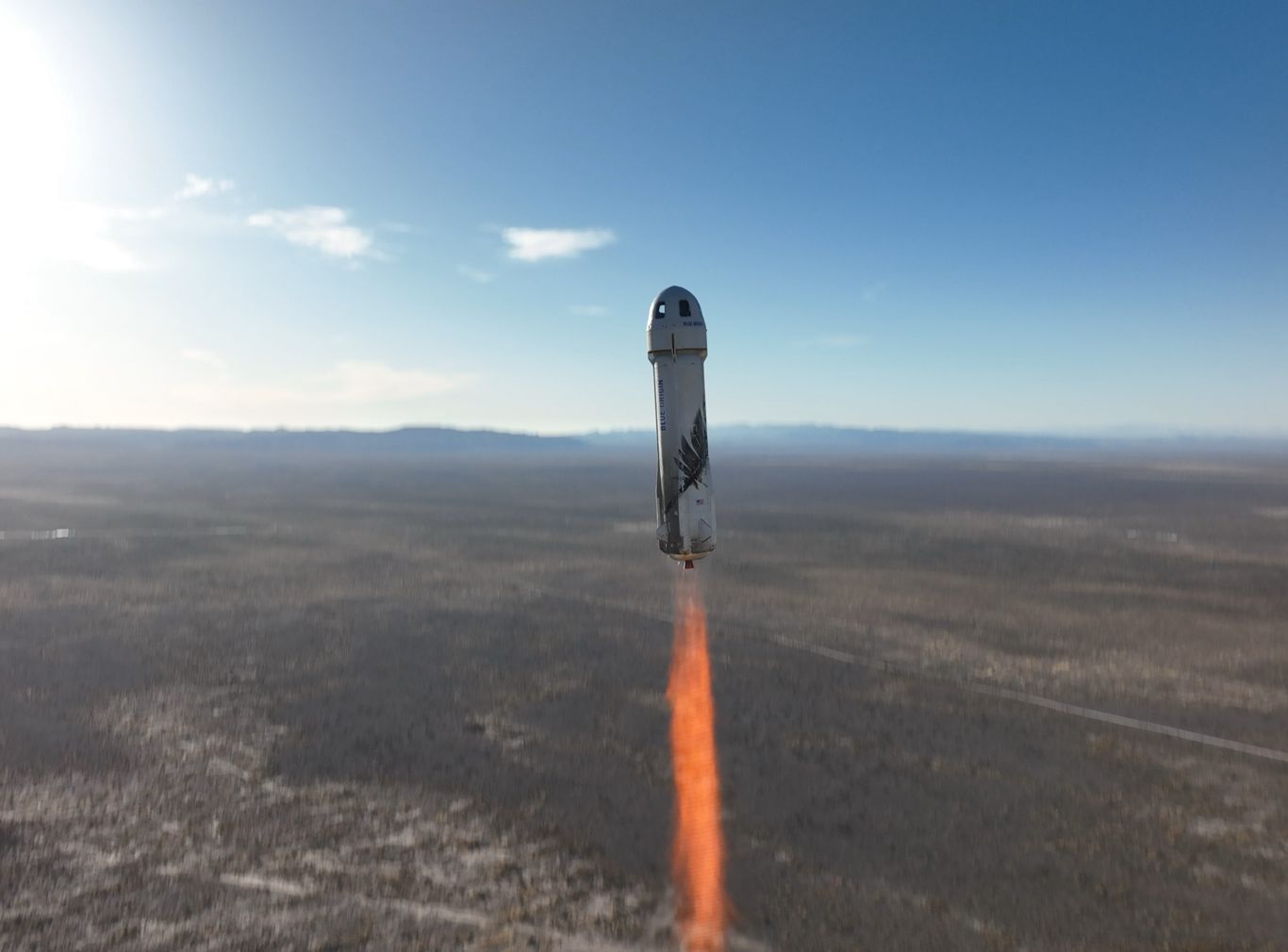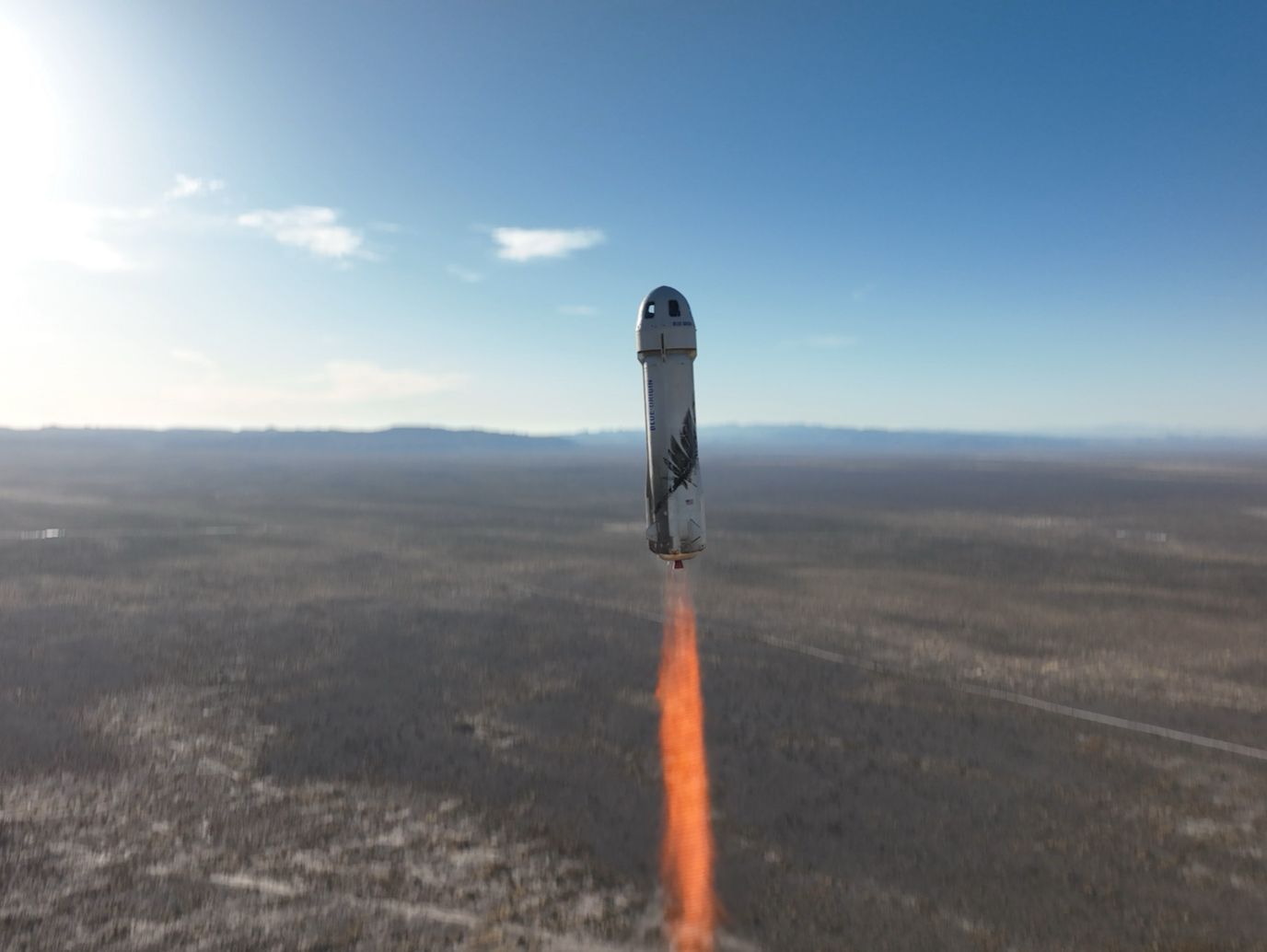31 December 2023

(Image - Unsplash)
As the year draws to a close, the new lunar race gathers speed, with Japan’s SLIM (Smart Lander for Investigating Moon) lander entering lunar orbit this week. The mission launched on September 6, and is due to land on January 20, hoping to make Japan the 5th nation to successfully land on the surface of the Moon.
Nicknamed the “Moon Sniper”, the JAXA (Japanese Space Agency), will carry out a precision landing, aiming for a margin of error of less than 100 metres, and will also deliver a small spherical rover, capable of changing its shape in order to traverse the lunar surface.
The Japanese landing will come shortly before the anticipated commercial race between US companies Astrobotic and Intuitive Machines. The former are set to launch on January 8, while Intuitive Machines are aiming for a mid-February launch, after experiencing some delays. Due to the different trajectories of each mission, they are potentially lined-up to land within a short space of time of each other.
After the failed landing attempt by iSpace in April, the companies will be looking to become the commercial landers to successfully land on the Moon, signalling a new era for a commercial lunar economy.
Intuitive Machines establish new partnership
In anticipation of a growing New Space and lunar economy, Intuitive Machines have announced this week that they have entered a strategic partnership with the South Korean, Boryung Corporation, looking to expand their opportunities in the space sector.
Steve Altemus, President and Chief Executive Officer of Intuitive Machines. Said that “The two firms intend to cooperate together in discussing critical infrastructure partnerships in and around the Moon to facilitate a long-term life science campaign for research and understanding of how humans live and work in space and off planet.”
The cooperation also represents an expanding and diversifying economy, with existing companies looking to enter the space economy.

Blue's New Shepherd rocket (Image - Blue Origin)
UK aim big for 2024, ULA sale anticipated in 2024
The UK is set to expand and diversify its opportunities in New Space in 2024, on track for its ambitious goal of capturing ten percent of the global space market, as well as becoming one of the top places for space investment, second only to the US.
Last week it was announced that Saxavord spaceport (Scotland) has received a launch license, set to become the first place for vertical space launches in Western Europe. Also, the growing space nation is aiming to play its part in the development of in-space manufacturing, through companies such as Space Forge (Wales).
The vacuum and micro-gravity conditions of space make it ideal for the production of delicate products such as materials for semiconductors and pharmaceuticals. With the tumbling cost of space-launch, the process has become more financially viable. However, a remaining barrier is that of sending the finished products back to Earth using reentry vehicles.
It’s expected that these companies, and others, will continue to develop technology which will reduce these costs further, expanding the possibilities for in-space manufacturing, an area which is already seeing increasing activity. Varda (US) this year successfully manufactured ritonavir, a drug used to treat HIV, in-orbit, while Space Forge are set to launch their next ForgeStar mission in 2024, producing semiconductor materials.
ULA sale could prove big for Blue Origin
Another significant event for 2024 could be the upcoming sale of leading rocket manufacturer, United Launch Alliance, with three companies rumoured to be in the running; Cerberus, Textron and Blue Origin.
Cerberus are a private equity firm with a diverse portfolio of investments, while Textron work in commercial aviation. The most interesting player though would probably be Blue Origin, who are already contractors for ULA, providing them with their new BE-4 engines for the new Vulcan rocket.
Access to ULA’s heritage and knowledge, as well as access to their portfolio of vehicles, may give Blue the leg-up they are looking for in order to compete with companies such as SpaceX and Rocket Lab. The company have faced delays with their anticipated reusable New Glenn rocket, designed to compete with the Falcon-9, as well as problems with the smaller New Shepherd after a launch failed mid-flight last year.
Furthermore, increased competition for the leaders of New Space could force more efficiency and reduced costs for access to space, a key ingredient which has led to the exponential growth of New Space in the last 15 years.
Next year, just as the current one has, will have much to offer.
Our future in space

(Image - Unsplash)
31 December 2023
JAXA lander arrives in lunar orbit, Intuitive Machines enter partnership, UK anticipate big year ahead - Space News Roundup
As the year draws to a close, the new lunar race gathers speed, with Japan’s SLIM (Smart Lander for Investigating Moon) lander entering lunar orbit this week. The mission launched on September 6, and is due to land on January 20, hoping to make Japan the 5th nation to successfully land on the surface of the Moon.
Nicknamed the “Moon Sniper”, the JAXA (Japanese Space Agency), will carry out a precision landing, aiming for a margin of error of less than 100 metres, and will also deliver a small spherical rover, capable of changing its shape in order to traverse the lunar surface.
The Japanese landing will come shortly before the anticipated commercial race between US companies Astrobotic and Intuitive Machines. The former are set to launch on January 8, while Intuitive Machines are aiming for a mid-February launch, after experiencing some delays. Due to the different trajectories of each mission, they are potentially lined-up to land within a short space of time of each other.
After the failed landing attempt by iSpace in April, the companies will be looking to become the commercial landers to successfully land on the Moon, signalling a new era for a commercial lunar economy.
Intuitive Machines establish new partnership
In anticipation of a growing New Space and lunar economy, Intuitive Machines have announced this week that they have entered a strategic partnership with the South Korean, Boryung Corporation, looking to expand their opportunities in the space sector.
Steve Altemus, President and Chief Executive Officer of Intuitive Machines. Said that “The two firms intend to cooperate together in discussing critical infrastructure partnerships in and around the Moon to facilitate a long-term life science campaign for research and understanding of how humans live and work in space and off planet.”
The cooperation also represents an expanding and diversifying economy, with existing companies looking to enter the space economy.

Blue's New Shepherd rocket (Image - Blue Origin)
UK aim big for 2024, ULA sale anticipated in 2024
The UK is set to expand and diversify its opportunities in New Space in 2024, on track for its ambitious goal of capturing ten percent of the global space market, as well as becoming one of the top places for space investment, second only to the US.
Last week it was announced that Saxavord spaceport (Scotland) has received a launch license, set to become the first place for vertical space launches in Western Europe. Also, the growing space nation is aiming to play its part in the development of in-space manufacturing, through companies such as Space Forge (Wales).
The vacuum and micro-gravity conditions of space make it ideal for the production of delicate products such as materials for semiconductors and pharmaceuticals. With the tumbling cost of space-launch, the process has become more financially viable. However, a remaining barrier is that of sending the finished products back to Earth using reentry vehicles.
It’s expected that these companies, and others, will continue to develop technology which will reduce these costs further, expanding the possibilities for in-space manufacturing, an area which is already seeing increasing activity. Varda (US) this year successfully manufactured ritonavir, a drug used to treat HIV, in-orbit, while Space Forge are set to launch their next ForgeStar mission in 2024, producing semiconductor materials.
ULA sale could prove big for Blue Origin
Another significant event for 2024 could be the upcoming sale of leading rocket manufacturer, United Launch Alliance, with three companies rumoured to be in the running; Cerberus, Textron and Blue Origin.
Cerberus are a private equity firm with a diverse portfolio of investments, while Textron work in commercial aviation. The most interesting player though would probably be Blue Origin, who are already contractors for ULA, providing them with their new BE-4 engines for the new Vulcan rocket.
Access to ULA’s heritage and knowledge, as well as access to their portfolio of vehicles, may give Blue the leg-up they are looking for in order to compete with companies such as SpaceX and Rocket Lab. The company have faced delays with their anticipated reusable New Glenn rocket, designed to compete with the Falcon-9, as well as problems with the smaller New Shepherd after a launch failed mid-flight last year.
Furthermore, increased competition for the leaders of New Space could force more efficiency and reduced costs for access to space, a key ingredient which has led to the exponential growth of New Space in the last 15 years.
Next year, just as the current one has, will have much to offer.
Share this article
31 December 2023
JAXA lander arrives in lunar orbit, Intuitive Machines enter partnership, UK anticipate big year ahead - Space News Roundup

(Image - Unsplash)
As the year draws to a close, the new lunar race gathers speed, with Japan’s SLIM (Smart Lander for Investigating Moon) lander entering lunar orbit this week. The mission launched on September 6, and is due to land on January 20, hoping to make Japan the 5th nation to successfully land on the surface of the Moon.
Nicknamed the “Moon Sniper”, the JAXA (Japanese Space Agency), will carry out a precision landing, aiming for a margin of error of less than 100 metres, and will also deliver a small spherical rover, capable of changing its shape in order to traverse the lunar surface.
The Japanese landing will come shortly before the anticipated commercial race between US companies Astrobotic and Intuitive Machines. The former are set to launch on January 8, while Intuitive Machines are aiming for a mid-February launch, after experiencing some delays. Due to the different trajectories of each mission, they are potentially lined-up to land within a short space of time of each other.
After the failed landing attempt by iSpace in April, the companies will be looking to become the commercial landers to successfully land on the Moon, signalling a new era for a commercial lunar economy.
Intuitive Machines establish new partnership
In anticipation of a growing New Space and lunar economy, Intuitive Machines have announced this week that they have entered a strategic partnership with the South Korean, Boryung Corporation, looking to expand their opportunities in the space sector.
Steve Altemus, President and Chief Executive Officer of Intuitive Machines. Said that “The two firms intend to cooperate together in discussing critical infrastructure partnerships in and around the Moon to facilitate a long-term life science campaign for research and understanding of how humans live and work in space and off planet.”
The cooperation also represents an expanding and diversifying economy, with existing companies looking to enter the space economy.

Blue's New Shepherd rocket (Image - Blue Origin)
UK aim big for 2024, ULA sale anticipated in 2024
The UK is set to expand and diversify its opportunities in New Space in 2024, on track for its ambitious goal of capturing ten percent of the global space market, as well as becoming one of the top places for space investment, second only to the US.
Last week it was announced that Saxavord spaceport (Scotland) has received a launch license, set to become the first place for vertical space launches in Western Europe. Also, the growing space nation is aiming to play its part in the development of in-space manufacturing, through companies such as Space Forge (Wales).
The vacuum and micro-gravity conditions of space make it ideal for the production of delicate products such as materials for semiconductors and pharmaceuticals. With the tumbling cost of space-launch, the process has become more financially viable. However, a remaining barrier is that of sending the finished products back to Earth using reentry vehicles.
It’s expected that these companies, and others, will continue to develop technology which will reduce these costs further, expanding the possibilities for in-space manufacturing, an area which is already seeing increasing activity. Varda (US) this year successfully manufactured ritonavir, a drug used to treat HIV, in-orbit, while Space Forge are set to launch their next ForgeStar mission in 2024, producing semiconductor materials.
ULA sale could prove big for Blue Origin
Another significant event for 2024 could be the upcoming sale of leading rocket manufacturer, United Launch Alliance, with three companies rumoured to be in the running; Cerberus, Textron and Blue Origin.
Cerberus are a private equity firm with a diverse portfolio of investments, while Textron work in commercial aviation. The most interesting player though would probably be Blue Origin, who are already contractors for ULA, providing them with their new BE-4 engines for the new Vulcan rocket.
Access to ULA’s heritage and knowledge, as well as access to their portfolio of vehicles, may give Blue the leg-up they are looking for in order to compete with companies such as SpaceX and Rocket Lab. The company have faced delays with their anticipated reusable New Glenn rocket, designed to compete with the Falcon-9, as well as problems with the smaller New Shepherd after a launch failed mid-flight last year.
Furthermore, increased competition for the leaders of New Space could force more efficiency and reduced costs for access to space, a key ingredient which has led to the exponential growth of New Space in the last 15 years.
Next year, just as the current one has, will have much to offer.
Share this article

